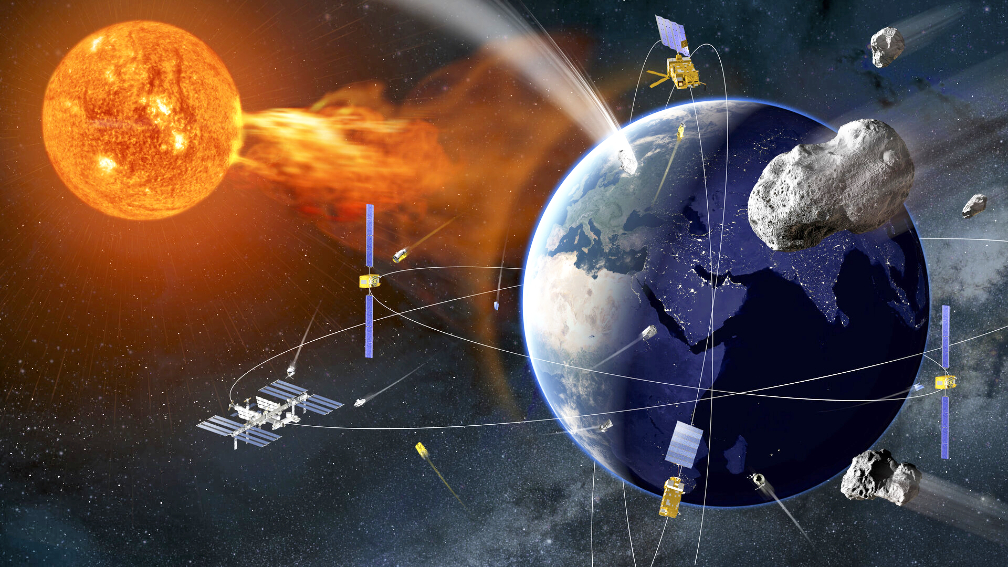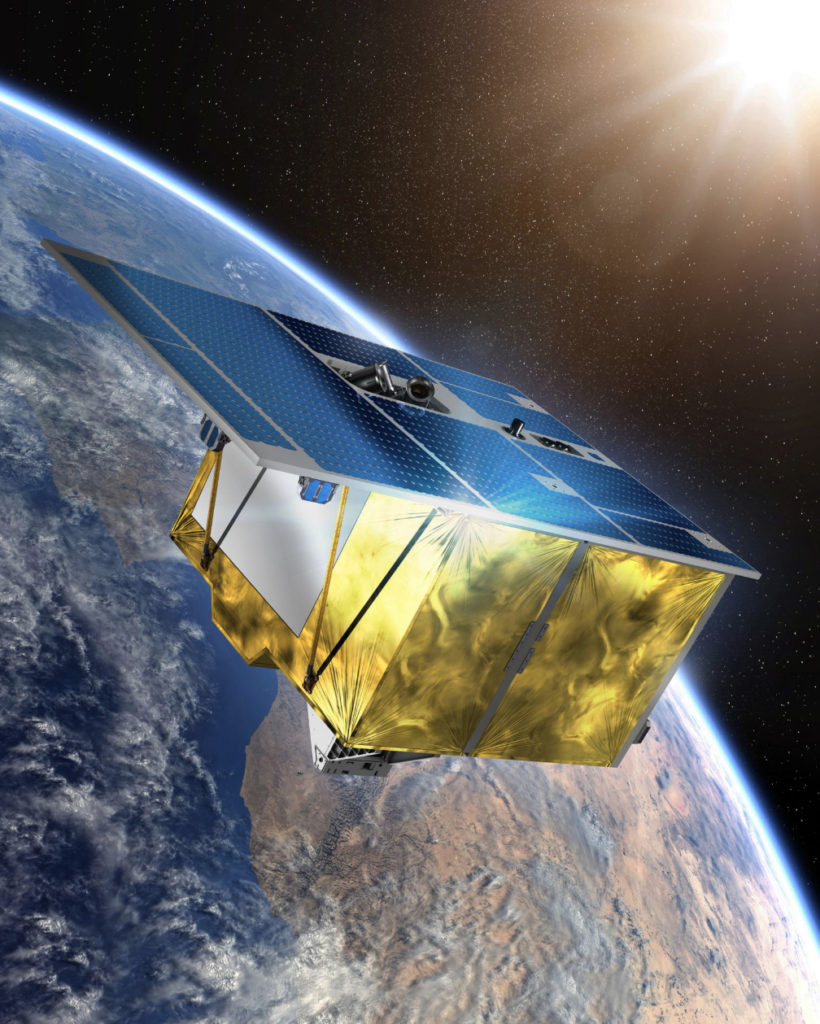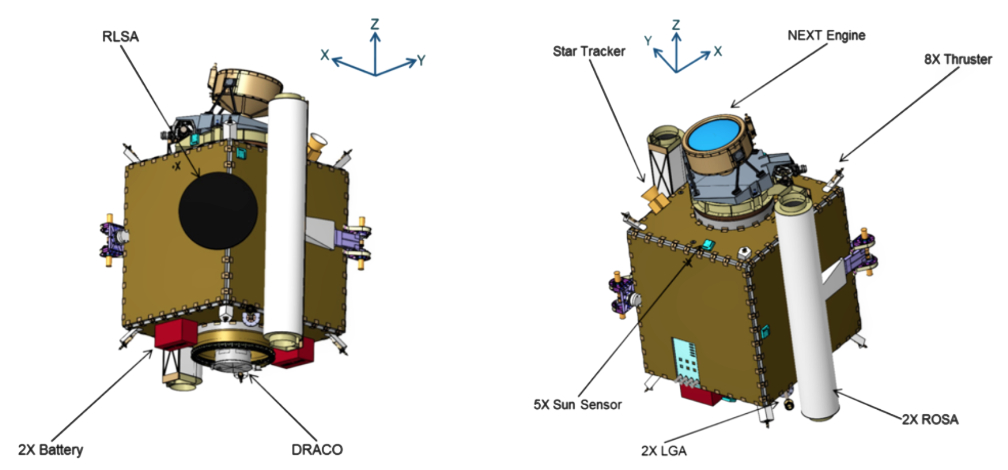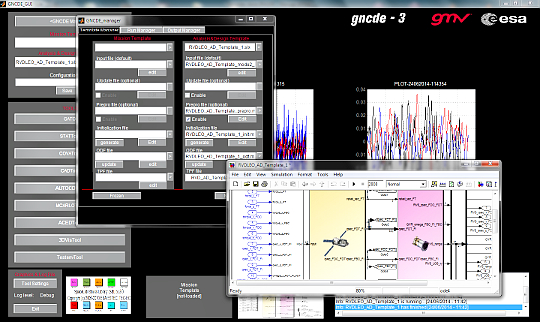
The European Space Agency (ESA) has signed with the German company OHB a 129.4 million euros contract that covers the detailed design, manufacturing and testing of the HERA mission.

This mission, ESA’s first ever planetary defense mission, will be Europe’s contribution to an international asteroid deflection effort carried out jointly with NASA and due for lift-off in October of 2024. The contract takes in the complete design of the interplanetary probe, integration and tests, including an advanced Guidance, Navigation and Control (GNC) system that has been awarded to the technology multinational GMV as subcontractor of OHB.
The mission’s prime objective is to develop planetary defense technology. NASA will be sending a first spacecraft called DART to a near-Earth binary asteroid system called Didymos, comprising a main, mountain-sized, 780-meter diameter asteroid called Didymain orbited by a small 160-meter asteroid called Dimorphos, about the size of the Guiza pyramid. DART will make a kinetic impact against Dimorphos in September 2022, altering its orbit around Didymain.

This secondary asteroid will be the first ever celestial body to have its physical and orbital features altered intentionally by human intervention. The European HERA mission will reach Didymos in late 2026 to study the effect of the DART impact and make a precise assessment of how much Dimorphos’s trajectory has been altered. The idea is to glean from this an understanding of how an asteroid on collision course with the Earth might be deviated in the future. The HERA mission will be controlled from the European Space Operations Center (ESOC), based in Darmstadt, Germany.
HERA has also been designed to carry out a months-long study of the binary system, thereby becoming the first ever interplanetary mission to rendezvous with a near-Earth binary asteroid system. During this research period various scientific instruments carried onboard HERA will collect data and help improving our asteroid knowledge and give us priceless insights into how the Earth might be protected from any potential asteroid impact.
HERA will be fitted with a GMV-developed Guidance, Navigation and Control (GNC) system. GMV is European GNC leader and ranks among the world’s pioneers in planetary and asteroid exploration missions. The company’s portfolio of European projects, featuring AIM, Marco POLO, Neoshield2, SYSNOVA-BEAST and Rosetta, has won GMV leadership in this field.

Asteroid approach and rendezvous operations are extremely demanding tasks. Their small size and mass, together with their irregular shapes and the unknown environment of deep space are all factors that make it very difficult to ensure safe control of spacecraft around asteroids. To cope with all these challenges GMV has developed an autonomous GNC system, providing this additional safety to guarantee mission success.
HERA, demonstrating groundbreaking autonomous asteroid-orbiting technology in an analogous way to driverless cars on Earth, will gather crucial information to help scientists and future mission planners gain a much better understanding of the composition and structure of asteroids.
The GNC system developed by GMV for HERA autonomously runs the flight plan defined by human controllers on Earth, incrementally stepping up its autonomy level until it is calculating on board the maneuvers for flying at a certain altitude or executing an escape maneuver in case of potential collision risk. Both of these features are fundamental innovations of HERA’s GNC.
The tests to certify the technological readiness of GMV’s autonomous GNC system were carried out using a camera designed to work in space and a scale model of the Didymain-Dimorphos binary asteroid system. To ensure these tests were as realistic as possible, the deep space darkness conditions in which HERA will be working have been reproduced on ground. The April 2020 ground validation tests of the GNC system were first conducted in GMV’s optical laboratory and afterwards in GMV’s robotic laboratory called platform-art@ in Tres Cantos, Madrid, one of Europe’s most advanced robotic testbeds for validating GNC systems.
